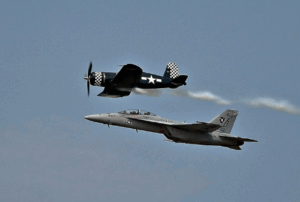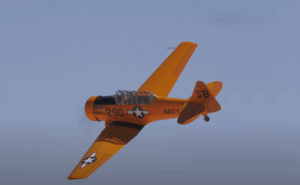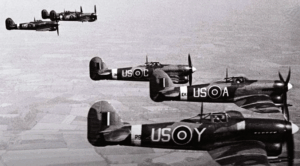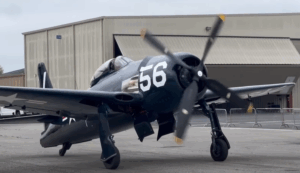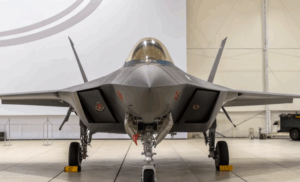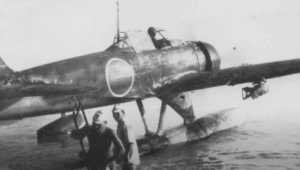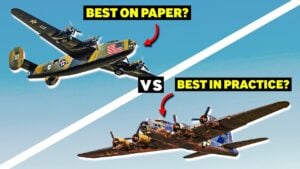Why This Aircraft Was Considered The Best Biplane During WWII

Look in The Past / YouTube
The Henschel Hs 123 was one of the few German aircraft that remained in service throughout World War II, despite being considered outdated before the war even began. Production of the aircraft had already ceased in 1938, yet its performance in combat was so impressive that military officials repeatedly called for it to be put back into production. Designed as a dive bomber and ground attack aircraft, the Hs 123 proved its worth on the battlefield, even as newer planes replaced most biplane designs. Its durability, reliability, and ability to operate under difficult conditions made it a valuable asset long after more advanced aircraft had entered service.
The Origins of Dive Bombing and the Hs 123’s Development
The concept of dive bombing was not new when World War II began. The practice dated back to World War I, when pilots realized that diving toward a target increased bombing accuracy. However, early aircraft lacked the structural strength to withstand the stresses of steep dives. After World War I, various countries experimented with dive bombers, recognizing their potential for precision strikes but also acknowledging the risks involved.
In Germany, Ernst Udet, a former fighter ace from World War I, became a strong advocate for dive bombing. His enthusiasm for the concept was fueled by demonstrations of the American Curtiss Hawk dive bombers in 1931. While some military officials opposed the idea, seeing dive bombers as slow and vulnerable, others saw potential. In 1933, German aviation authorities issued specifications for a new dive bomber. The aircraft needed to be a single-seat biplane with two 7.92mm machine guns and the ability to carry a combination of 250kg and 50kg bombs.

The Henschel Hs 123 Enters Production
Henschel, a company relatively new to aircraft manufacturing, submitted its Hs 123 design, competing against the Fieseler Fi 98. The Hs 123 was an advanced design for a biplane, featuring an all-metal fuselage and streamlined construction. After reviewing both aircraft, German authorities selected the Hs 123 for production. The first prototype, designated V1, took flight in April 1935, powered by a BMW 132A radial engine producing 725 horsepower.
Test flights quickly proved that the Hs 123 outperformed the Fieseler Fi 98. With its superior handling and rugged design, it was chosen for further development. Subsequent prototypes refined the design, including changes to engine cowling and structural reinforcements. The production model, known as the Hs 123A-1, entered service in 1936.

Combat Performance and Durability
Although it was initially intended as a dive bomber, the Hs 123 excelled as a ground attack aircraft. It first saw combat in the Spanish Civil War, where it demonstrated an ability to withstand damage while delivering effective strikes against enemy forces. Pilots praised its maneuverability and rugged construction, which allowed it to operate from rough airstrips and sustain heavy punishment in battle.
When World War II began, the Hs 123 was used in Poland and later in the Battle of France. Despite being considered outdated, it performed well in these early campaigns. The aircraft’s ability to carry bombs and provide close air support made it an essential tool for frontline troops. Even in harsh weather conditions, the Hs 123 proved more reliable than many newer aircraft. Its ability to function with minimal maintenance in rough conditions made it valuable on the Eastern Front, where it remained in use long after its official retirement.

Technical Specifications and Legacy
The Hs 123 had a wingspan of 10.5 meters and a length of 8.33 meters. It weighed 1,500 kg when empty, with a maximum takeoff weight of 2,215 kg. The aircraft was powered by a BMW 132D radial engine, which produced 880 horsepower, allowing it to reach a top speed of 341 km/h. With a combat range of 480 km and a service ceiling of 9,000 meters, the Hs 123 was effective in ground attack operations. Its armament consisted of two 7.92mm machine guns and the capability to carry up to 250 kg of bombs.
Although production ended in 1938, the Hs 123 continued to serve well into the war. It was eventually phased out as newer monoplane designs became available, but its reputation as a reliable and durable aircraft remained strong. Even after being retired from front-line service, some units attempted to bring it back into production due to its effectiveness in combat.














